
Of all the beasts that have roamed the earth, none are perhaps more successful than the dinosaurs. These fearsome, gigantic reptiles have captured the imaginations of millions, and part of their appeal lies in the mysteries surrounding them. Despite their popularity, however, many people don’t know the history of dinosaurs, where they came from, and which among them were the kings of the land. In this post, we’re hoping to cast some light on these questions while also providing examples of the world’s largest creatures!
Where Did Dinosaurs Come From?
Dinosaurs are the world’s most successful group of animals. They ruled the earth for roughly 250 million years, with their reign finally ending some 66 million years ago. That length of time is nearly impossible for us to grasp; suffice it to say, dinosaurs were around for a very, very long time.

Where they come from, however, is something of a mystery. While it is possible to track the evolution of certain species of dinosaurs, there is no definitive answer as to which dinosaur was the first to ever roam the earth.
Where Did the Dinosaurs Live?
Dinosaurs lived in various parts of the world, and specimens have been discovered in the USA, Europe, Asia, Australia, South Africa, and many other countries. However, during the Triassic Period — the earliest chapter of dinosaur history — dinosaurs roamed the supercontinent Pangaea, which was once the largest landmass on Earth.
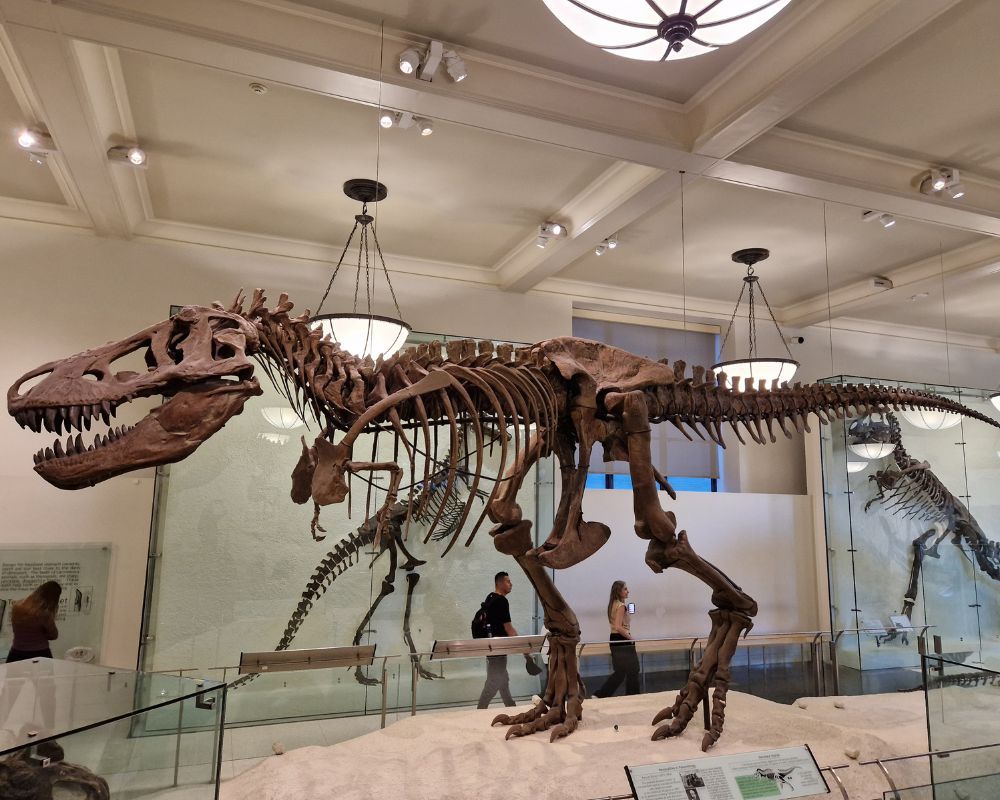
Over the years, however, as the Triassic Period progressed into the Jurassic Period — and then into the Cretaceous Period — this landmass began to sunder and split. Eventually, by the time the dinosaurs went extinct, these separate landmasses became the continents we know today, albeit with a few differences.
When Did the Dinosaurs Live?
Despite what you may believe, not all dinosaurs existed at the same time as others. Remember, these beasts roamed the earth for 250 million years! It’s impossible for them to have all lived at the same time and place. There are three periods in which the dinosaurs ruled the earth: the Triassic Period, the Jurassic Period, and the Cretaceous Period.

Tyrannosaurus Rex lived during the Cretaceous Period; Stegosaurus lived during the Jurassic Period. These two popular yet distinct species of dinosaur were separated by about 66 million years!
Theropods
Dinosaurs can be categorized into three distinct groups: theropods, sauropods, and ornithopods. Theropods were bipedal predators and meat-eaters, physically characterized by large heads, small forearms, and — of course — a fearsome appearance.

These are most likely the dinosaurs that you are most familiar with; popular examples include both Tyrannosaurus Rex and the Velociraptor.
Sauropods
Sauropods were quadrupedal, walking on four legs, and easily identified by their long necks, pot-bellies, and large limbs. Many sauropods were herbivores, making them a much more peaceful bunch than the theropods.
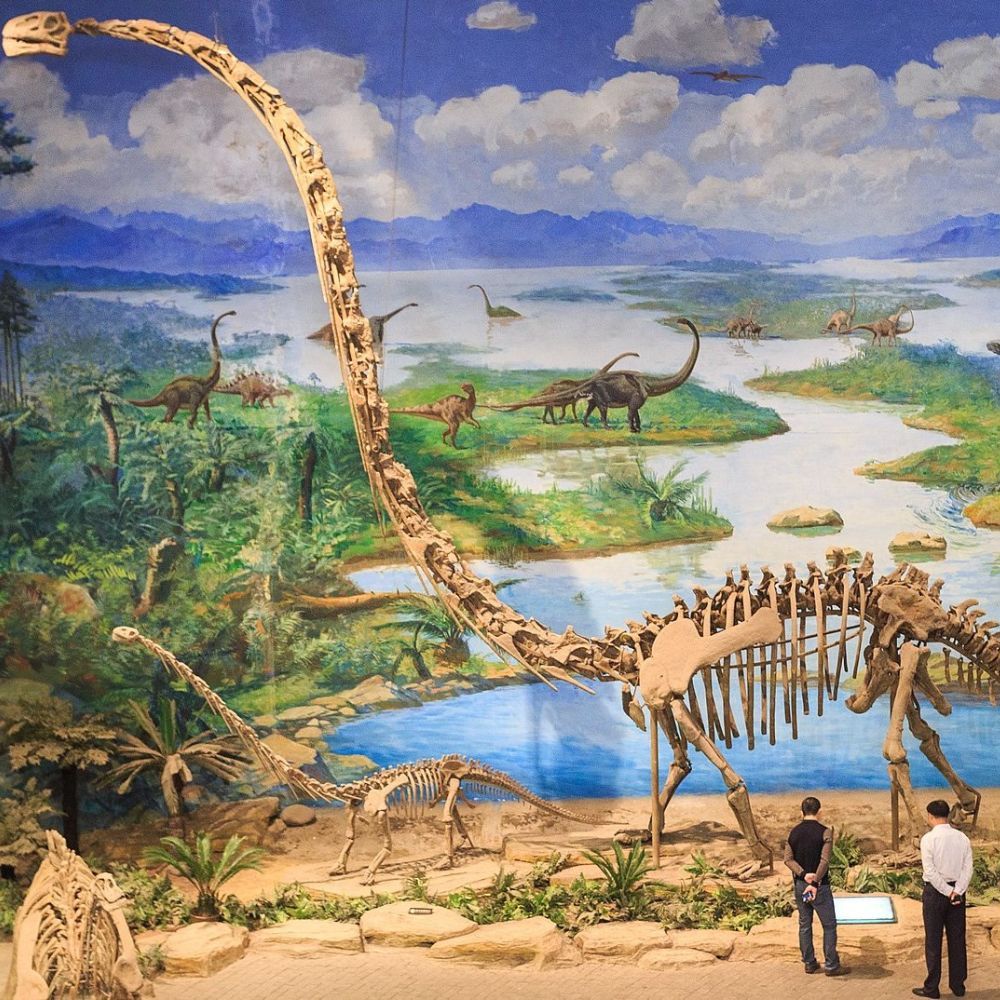
In fact, many sauropods often fell prey to theropods despite typically being much larger. Their size and long necks, however, provided advantages for reaching vegetation high in trees, giving them access to food sources unavailable to other herbivores.
Ornithopods
Finally, ornithopods include beaked plant-eaters and duck-billed dinosaurs. Some were bipedal; others were quadrupedal. There are many physical similarities between ancient ornithopods and many modern-day species of birds.
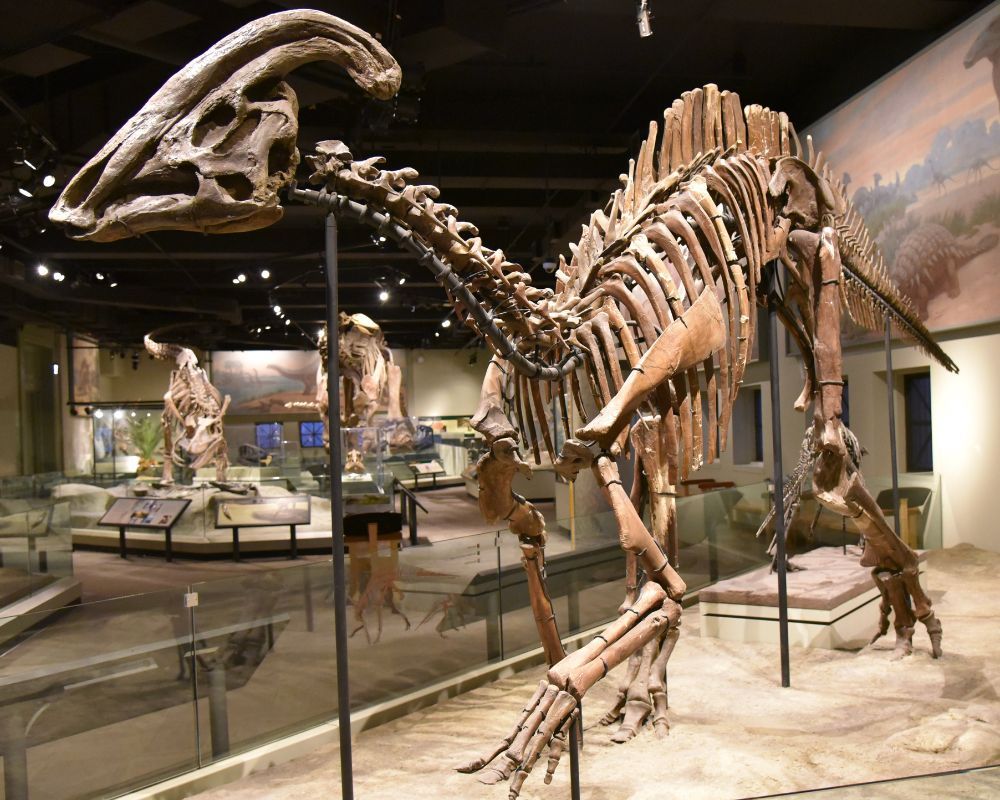
Some of these creatures also featured horns and spikes. Their advanced chewing mechanisms and specialized teeth made them highly efficient at processing tough plant material, a trait that helped them thrive in diverse environments.
Triassic Era
The first period in which the reptiles we know today as dinosaurs first evolved is known as the Triassic Period. During this period, the earth as we know it — continents separated by vast oceans — was completely different. There was only one land mass, a supercontinent known as Pangaea.
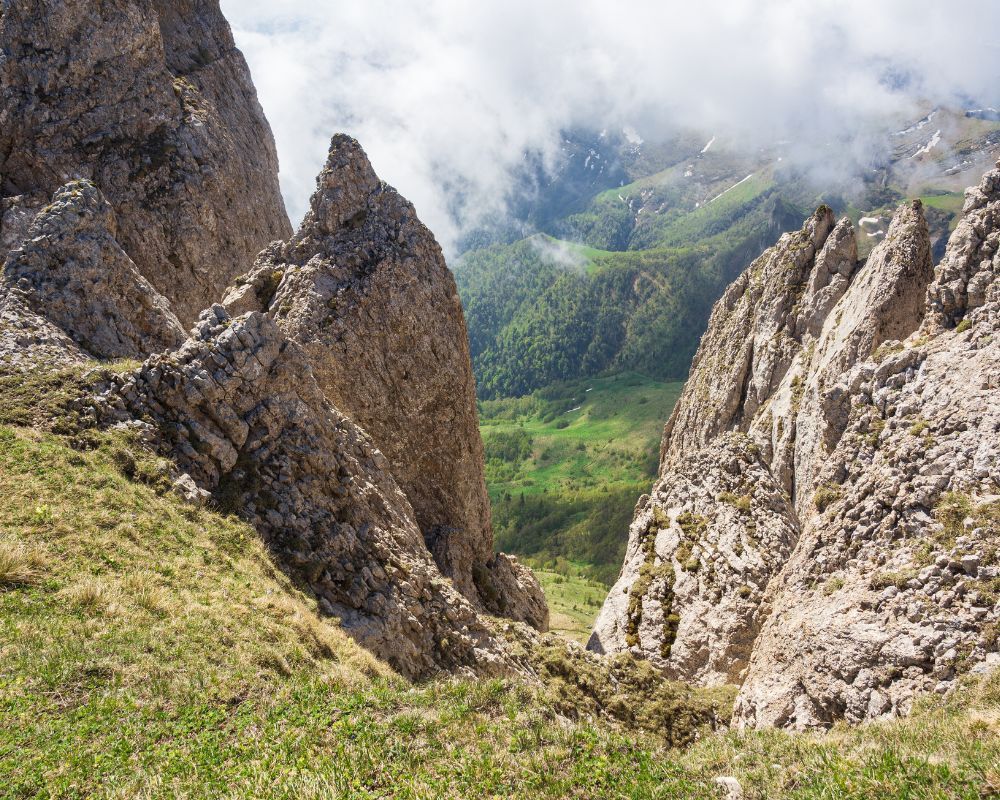
As such, the differences between types of flora and fauna were minuscule, as most of the continent was covered in large deserts. The climate was hot and dry, and so reptiles came to be the dominant species, evolving into large, monstrous beasts we know as dinosaurs.
Alwalkeria
Despite our general understanding of dinosaurs as being huge, terrifying creatures to behold — thanks, Jurassic Park — it may surprise you to learn that some of these ancient reptiles were no larger than the average domestic dog. Take Alwalkeria, for example, a small dinosaur from the Triassic Period.
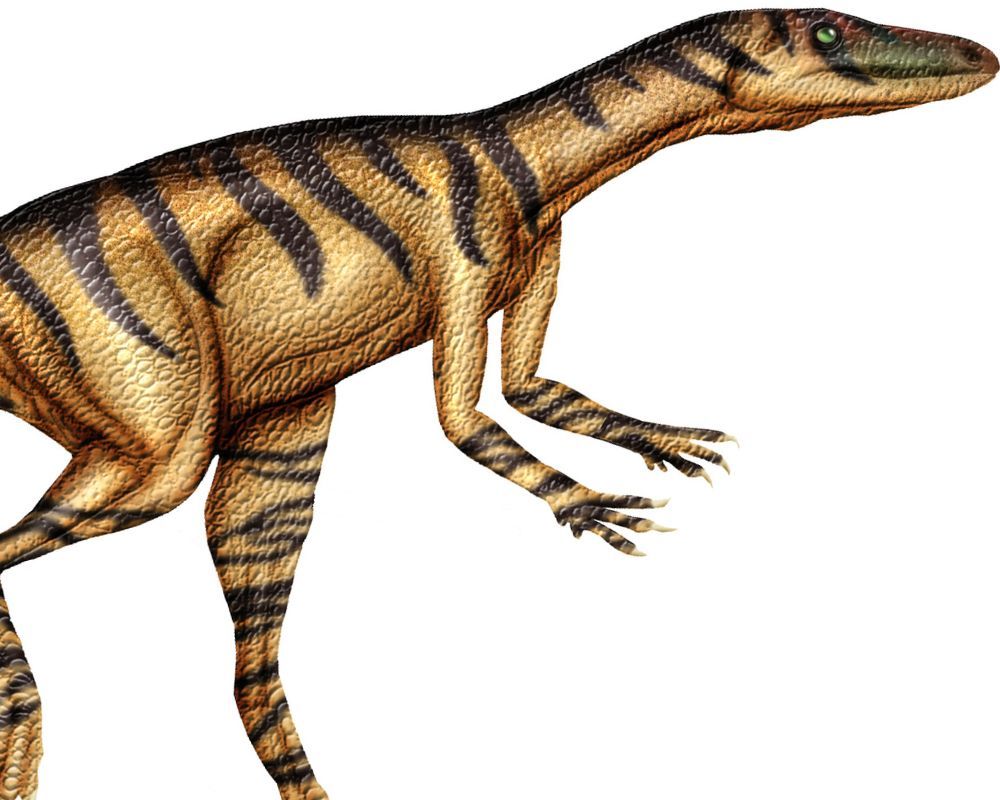
Alwalkeria is estimated to have been no longer than 50 centimeters. Most of our understanding of Alwalkeria comes from a single incomplete skeleton, but what we do know is that it was a bipedal omnivore, and a very small one at that!
Camposaurus
Most of the information surrounding the Triassic Period and its inhabitants is incomplete. To this day, there are many ancient mysteries that have yet to be solved. This is particularly true for Camposaurus, a small theropod whose exact size we have yet to determine.
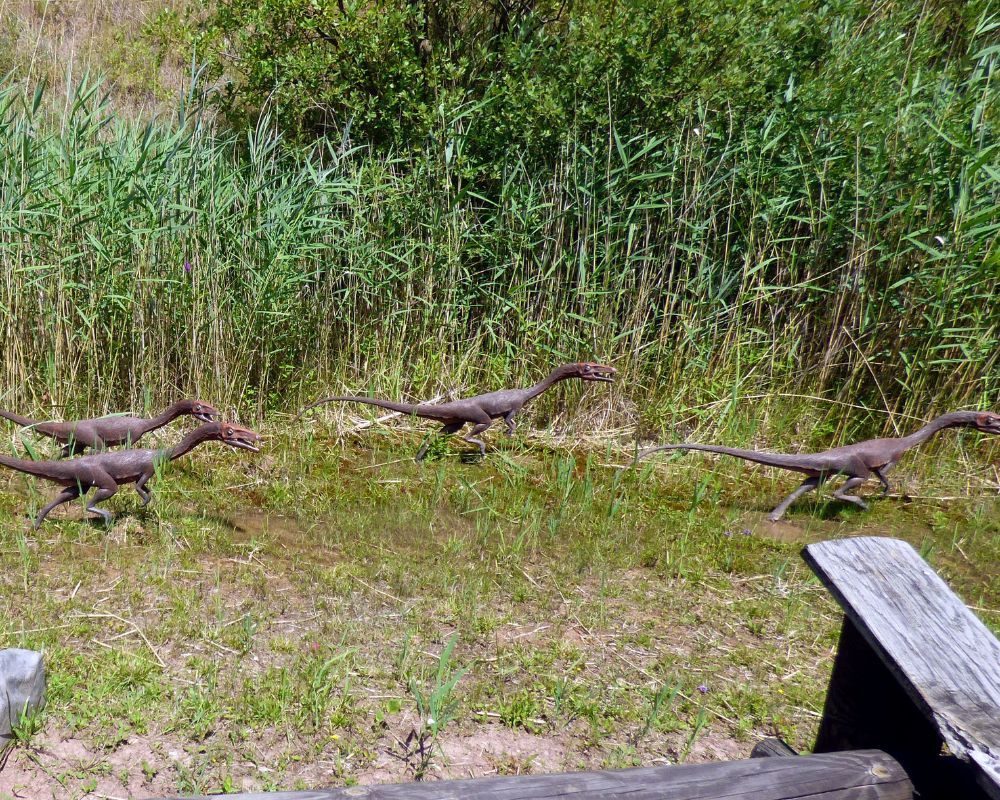
What we do know is that its skeleton (parts of it, anyway) was found in modern-day Arizona, USA, and that it was a small carnivore. It lived during the Norian Age of the late Triassic Period, but so far, only its leg bones have been recovered.
Coelophysis
Though many dinosaurs and their complete biological makeup remain a mystery to us, sometimes archaeologists have a streak of good luck and are blessed with huge, near-complete skeletons. Take Coelophysis, for example, a medium-sized theropod from the late Triassic Period.
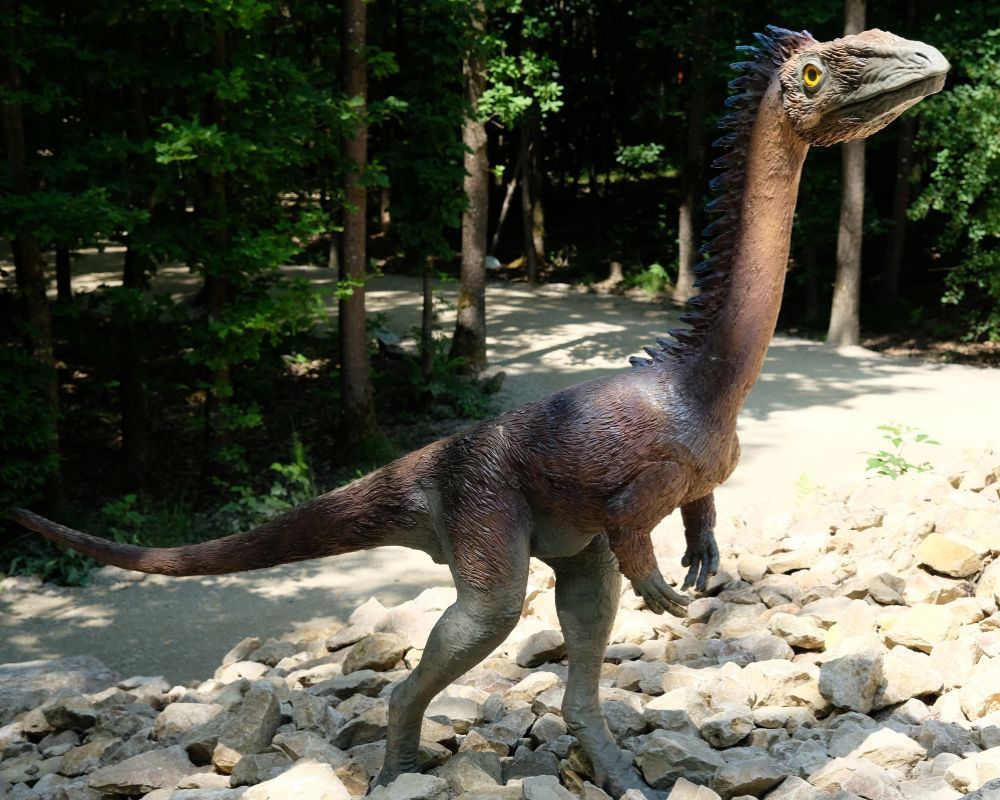
Coelophysis had long, curved claws and sharp teeth, which must have made it a terrifying beast to behold! Many of its skeletons were found close together, suggesting it may have been a pack animal, and one specimen was found to have the remains of a crocodile in its rib cage.
Daemonosaurus
Not all dinosaurs were built equally, and many of them are what we’d call “less than terrifying.” While we still don’t relish the chance of meeting one of these ancient reptiles in person, there are some that seem almost loveable and friendly, like Daemonsaurus, a theropod from the Triassic Period.
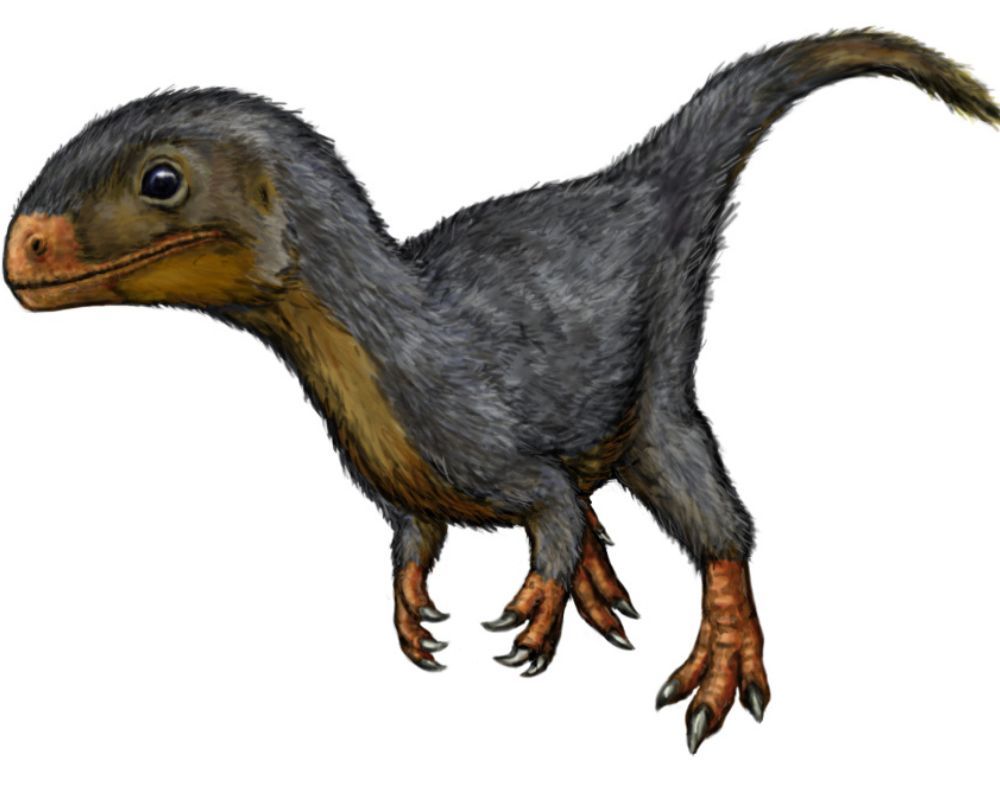
This unassuming monster was surprisingly large, capable of growing to nearly two meters in length. It had a short snout with sharp, protruding teeth and large eyes that made it seem more cute than some other dinosaurs on this list. Make no mistake, though: it’s still a meat-eater.
Eoraptor
Though it can be difficult to grasp, it’s important to remember that the period (or periods) in which the dinosaurs ruled the earth were long, longer than any other era of human history. As such, many dinosaurs did not exist at the same time as others, like Eoraptor, a small theropod from the Triassic Period.
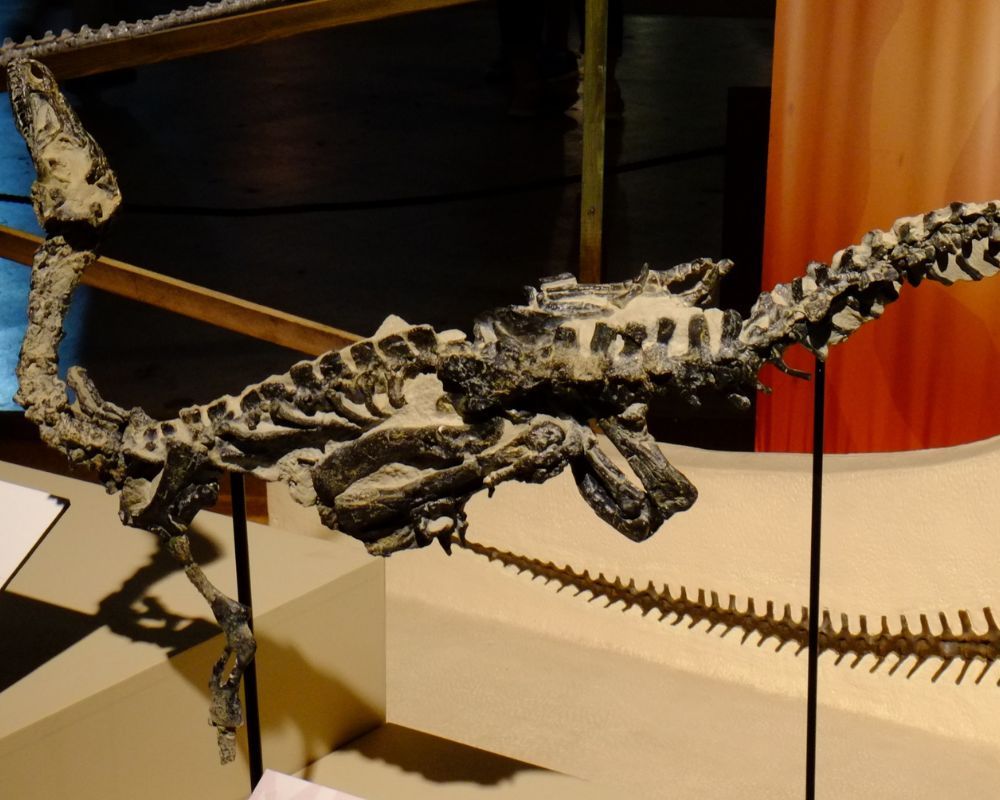
Eoraptor was one of the first dinosaurs to evolve. Its small size was offset by its sharp teeth and claws, and it looked a lot like a miniature version of the theropods that would go on to dominate the later periods of dinosaur history.
Gojirasaurus
Many of the beasts of the past have a way of invading our present with franchises like Jurassic Park and Godzilla. It’s very rare, however, for one of these fictional monsters to influence the past. And yet, that’s exactly the case for Gojirasaurus.
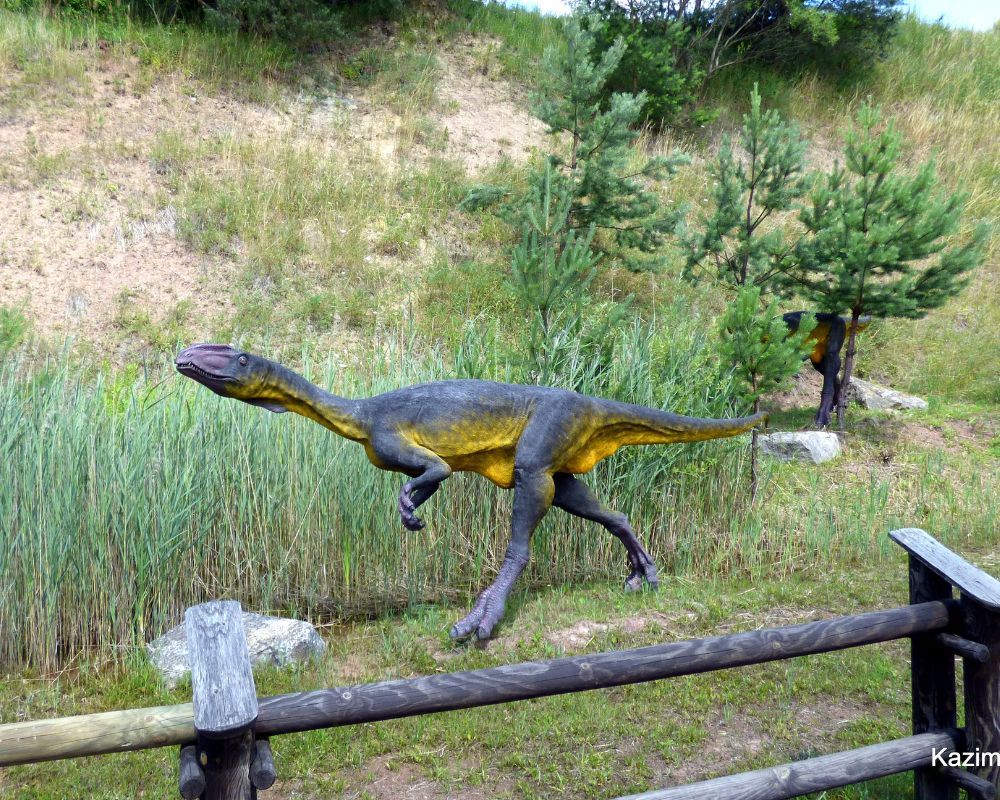
Gojirasaurus gets its name from one of the world’s most famous monsters, the one and only Godzilla. Despite this, however, it doesn’t share much in common with the notorious kaiju, being much leaner than its namesake. It was huge, though, and capable of growing up to 5 and a half meters in length.
Liliensternus
So far, many of the dinosaurs that have appeared on this list have been rather small compared to the gigantic creatures we imagine. Aren’t dinosaurs supposed to be huge? In fact, many of them were, like Liliensternus, a terrifying theropod from the Triassic Period.
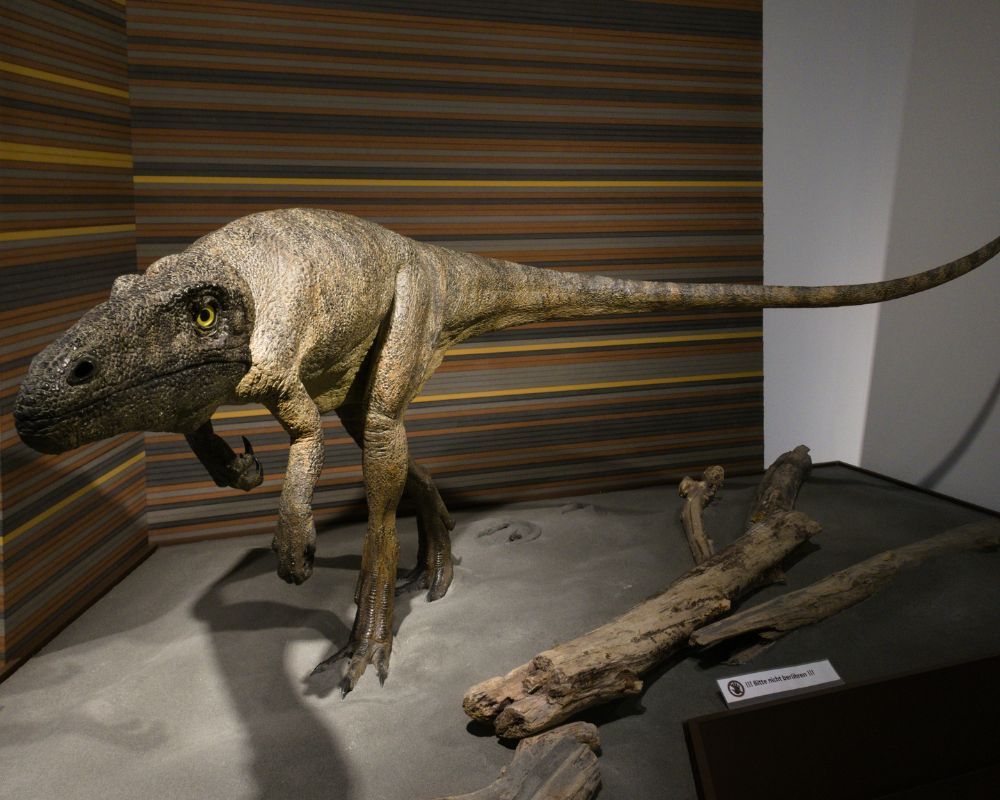
Like Gojirasaurus, Liliensternus could easily reach over 5 meters in length. It had a long neck and an even longer tail, and typically preyed on smaller herbivores. Interestingly, it’s speculated that Liliensternus may have had a crest-like growth on its head, making its monstrous aspect even more terrifying.
Melanorosaurus
Liliensternus and Gojirasaurus have so far dominated this list in terms of size. These are exactly the kind of creatures that make films like Jurassic Park so terrifying at times, and their diet of meat, meat, and more meat means we’re glad they no longer exist today.
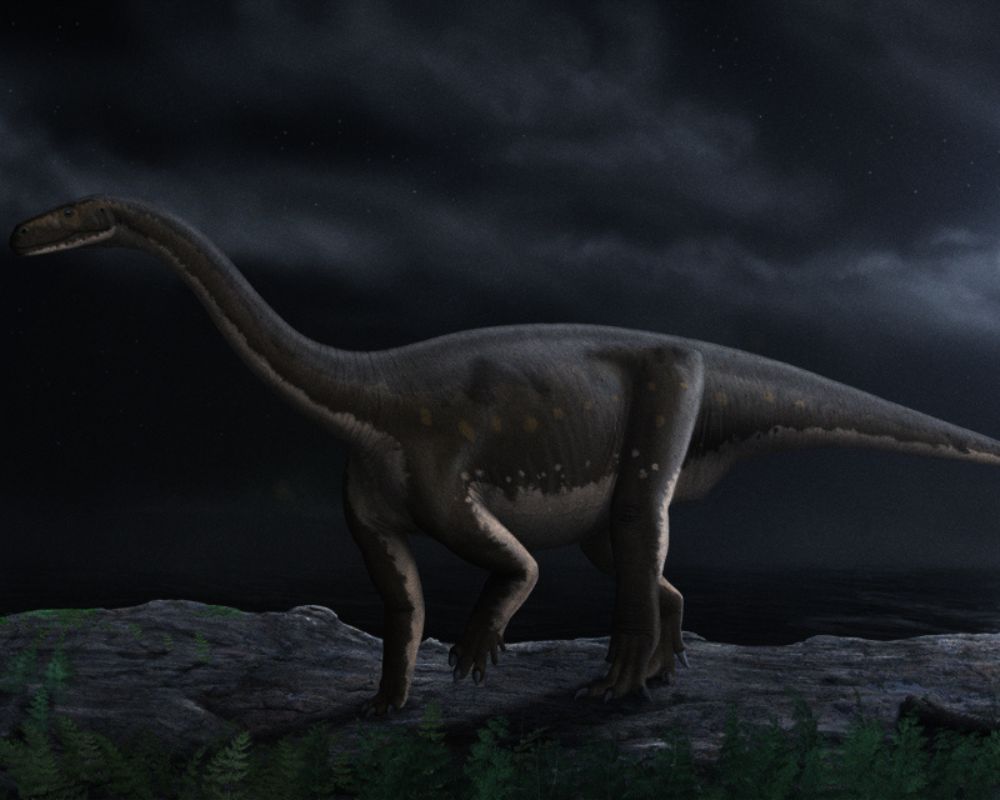
Fortunately, not all huge dinosaurs were meat-eaters. Melanorosaurus was one of the biggest reptiles of its time and grew to be 8 meters in length. It was an early sauropod, a type of dinosaur classified by its small head, huge limbs, and long neck.
Pantydraco
Despite extensive research and archaeological endeavors, we still know almost nothing about many dinosaurs. Thus, it seems fitting that one of these mysterious creatures should break the common dinosaur naming convention with a name like Pantydraco.
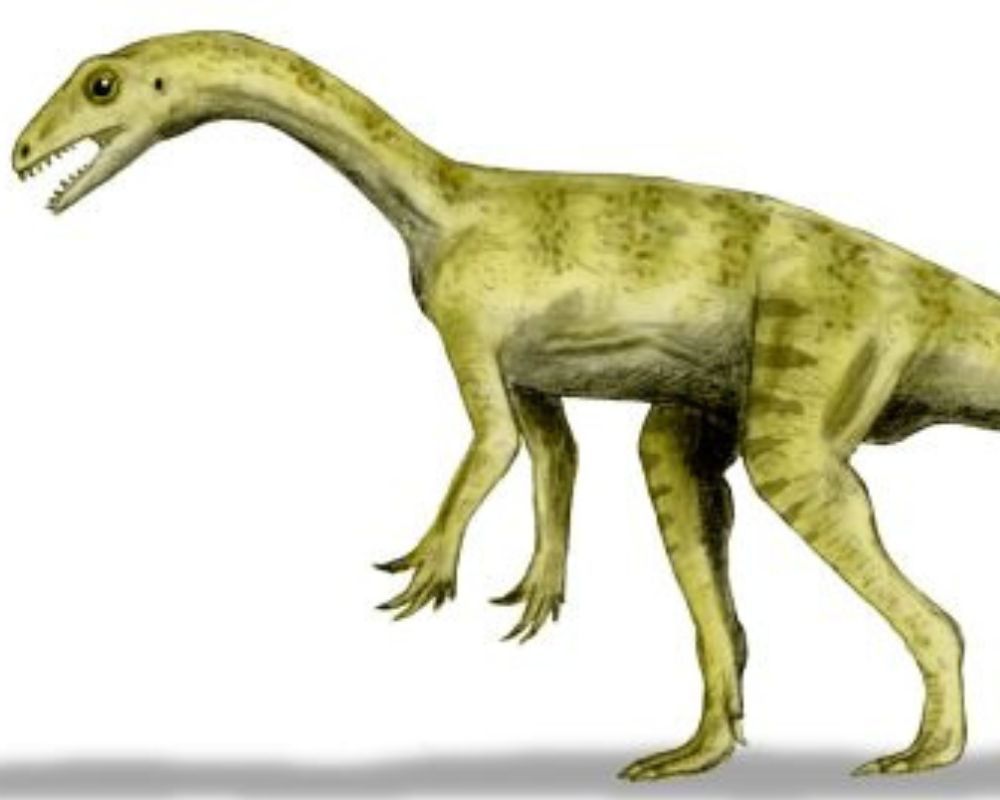
Pantydraco draws its unusual name from two Welsh words: pant-y-ffynnon, meaning well/spring, and draco, meaning dragon. Like Melanorosaurus, it was an early sauropod and featured a long neck and small head.
Plateosaurus
Conversely to dinosaurs like Pantydraco, there are other species that we know a great deal about. Some dinosaur skeletons are fairly common, as is the case with Plateosaurus, which was also one of the first dinosaurs to be named.
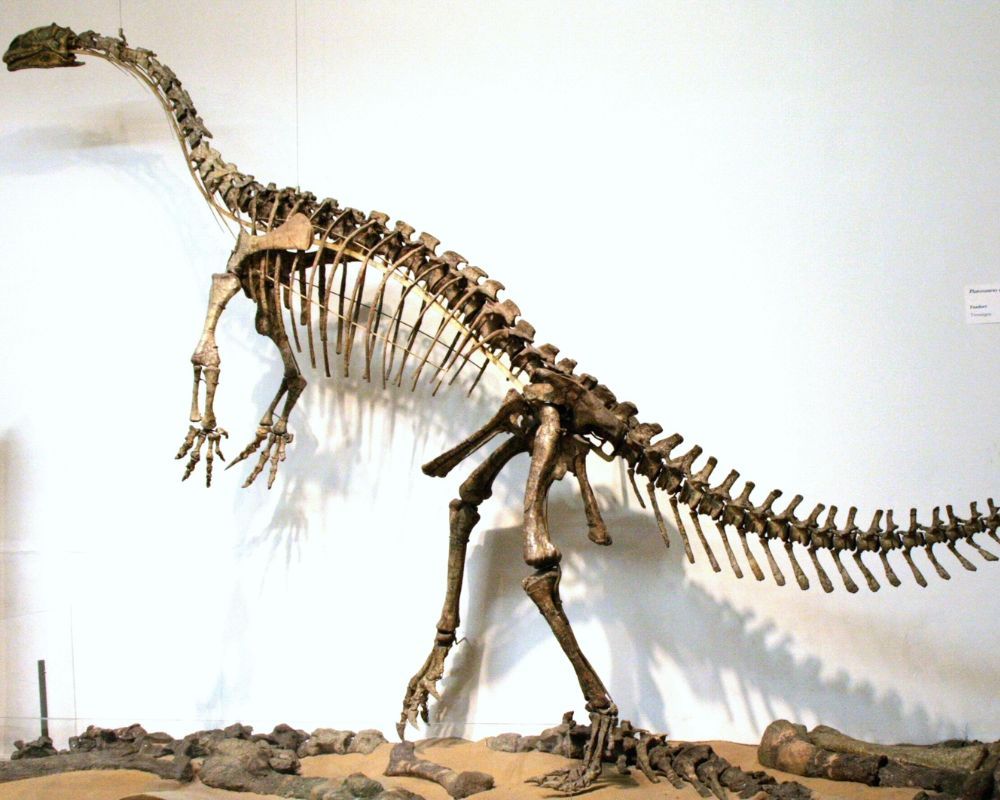
Like the previous two entries, Plateosaurus was an early sauropod that grew to be 5 to 10 meters in length. Many specimens were found close together in Europe and Greenland, suggesting that it may have been a herd animal.
Jurassic Era
Towards the end of the Triassic Period, Pangaea split in two, giving way to what we now know as the Atlantic Ocean. At the end of this period, a huge extinction event took place, causing many large land animals to be wiped out — but the dinosaurs survived. Because there were now two separate land masses, distinctions between the dinosaurs became clearer.

Plants and ferns also grew more numerous, allowing herbivorous dinosaurs — the sauropods — to evolve much quicker than before. Finally, temperatures also fell during this period, though it was still much hotter than it is today. The large seas that developed between different areas also increased rainfall.
Allosaurus
The Jurassic Period was a time when many of the world’s biggest predators evolved and hunted. Many of us would wish to avoid these creatures if they still existed today, which is why dinosaur fiction is so terrifying. This sentiment is epitomized by Allosaurus, a theropod from the Jurassic Period.
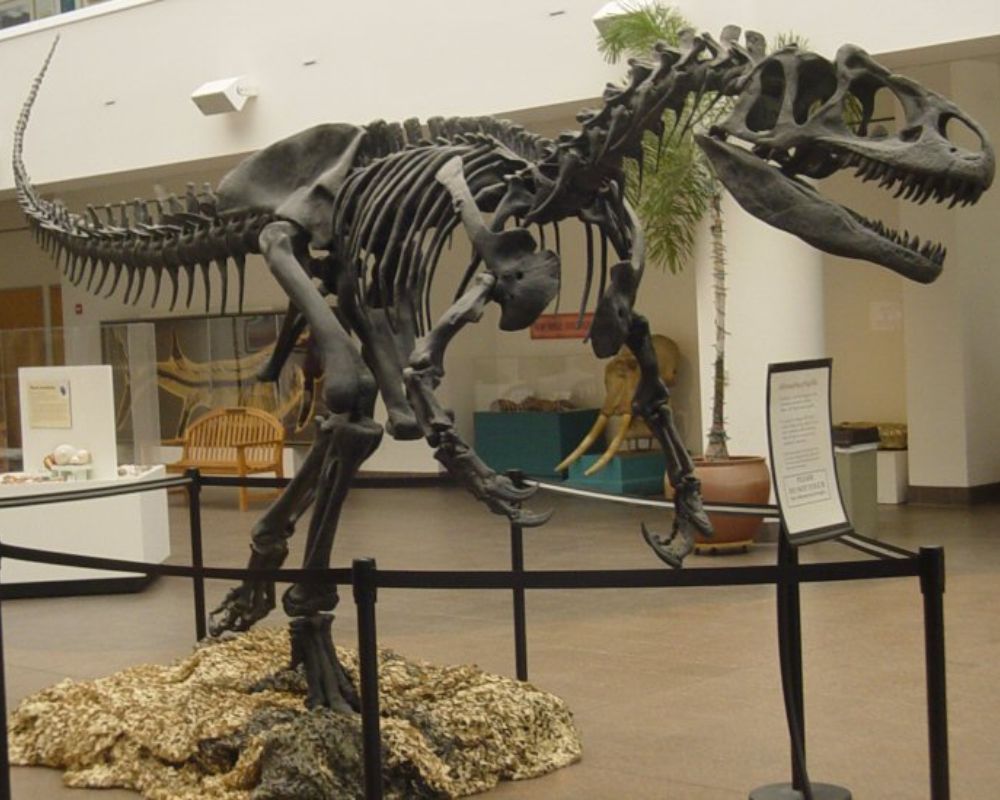
This towering monstrosity grew to be anywhere between 5 and 12 meters in length. It was an apex predator that likely feasted on many herbivores and sauropods, as well as stegosaurs such as Stegosaurus.
Archaeopteryx
The idea that small, friendly birds like chickens evolved from dinosaurs is as terrifying as it is humorously absurd. It’s funny to think that these near-flightless creatures share a common strand of genetic memory with something as terrifying as a Tyrannosaurus Rex.
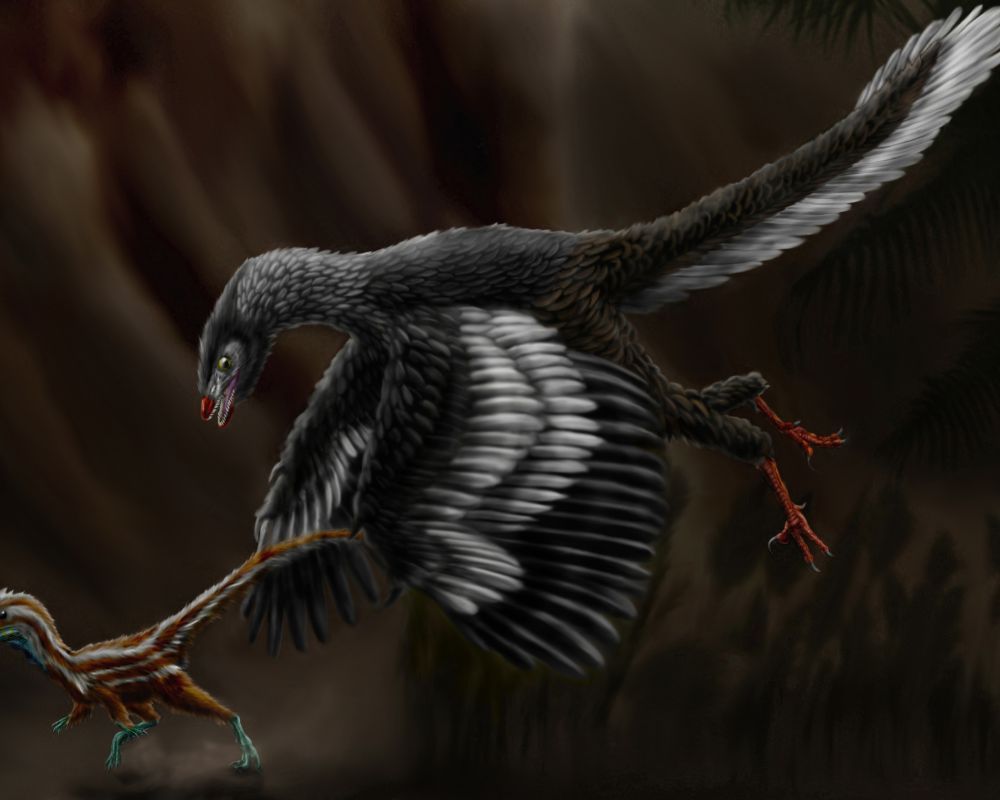
The genesis of this theory was Archaeopteryx, a terrifying winged monster from the Jurassic Period. This creature had the characteristics of both dinosaurs (teeth, claws, and a tail) and birds (wishbone and feathers). Its discovery enabled scientists like Charles Darwin to prove the theory of evolution.
Brontosaurus
Of course, despite the dominance of apex predators in the Jurassic Period’s ecosystem, many herbivores, and sauropods thrived. This was due to the abundance of flora that arose in the wake of Pangaea’s sundering, enabling these creatures to grow and evolve in conditions more suited to their habits.
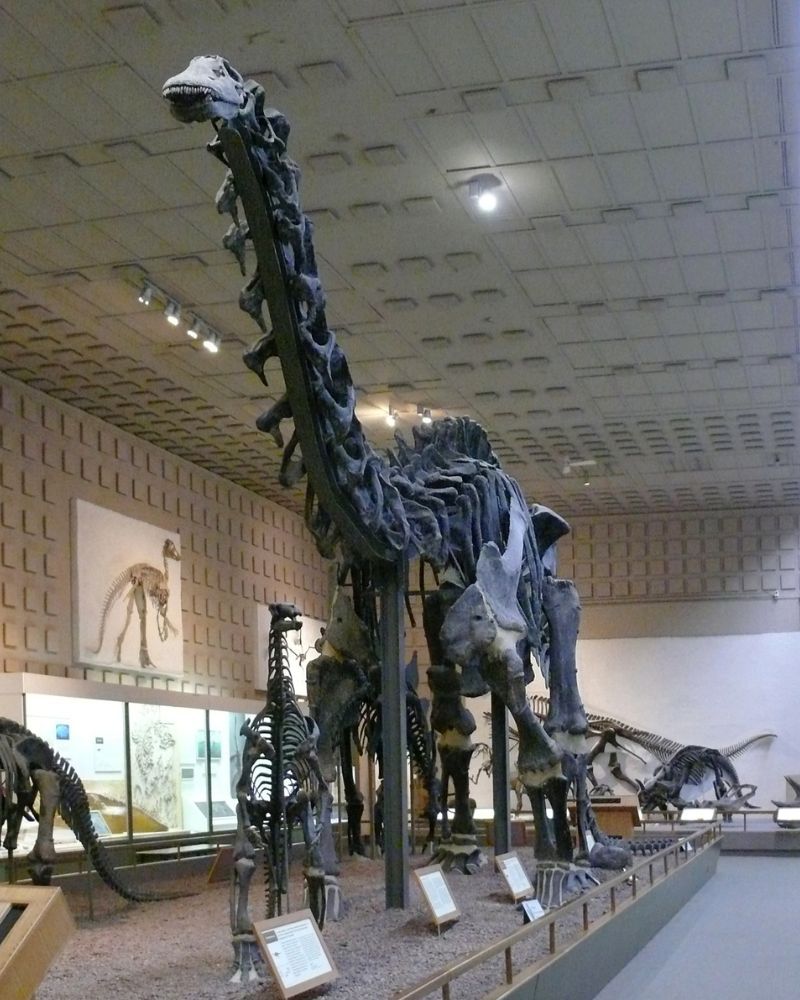
Brontosaurus was one such sauropod. Its name means “thunder lizard”, which is about as cool as they come. It could grow to a whopping 22 meters in length, and it is speculated that its tail could function as a whip, possibly as a deterrent to predators.
Camptosaurus
While it’s easy to generalize dinosaurs as overgrown reptilian killing machines, there are many differences between the distinct species of dinosaurs. Some are minute, while others are vast, such as the difference between theropods and sauropods.
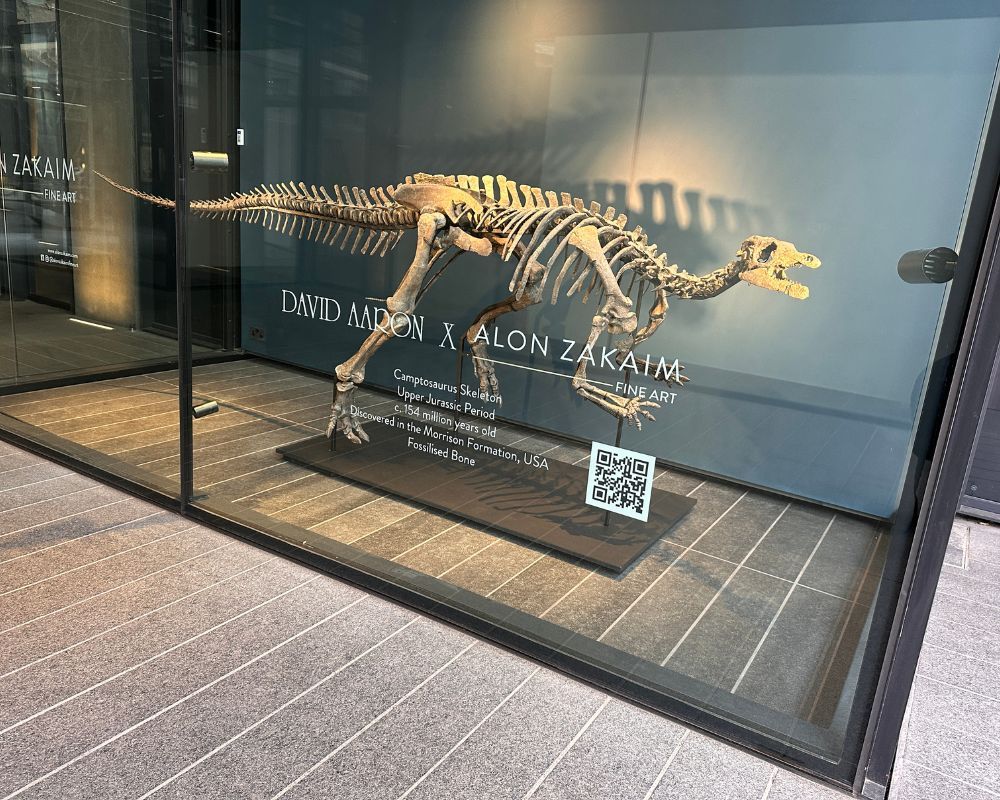
On the other hand, Camptosaurus had features of both groups, being bipedal like many theropods but with a small head like many sauropods. Despite this, it is not categorized as either, instead being an ornithopod, a type of dinosaur distinguished by a complex chewing mechanism that aided in eating plants.
Compsognathus
It’s difficult to imagine dinosaurs as anything other than the huge monsters of legend. Still, many of the species during this period of ancient history were tiny, with some no bigger than your average labrador. Compsognathus was — for a time — thought to be the world’s smallest dinosaur.
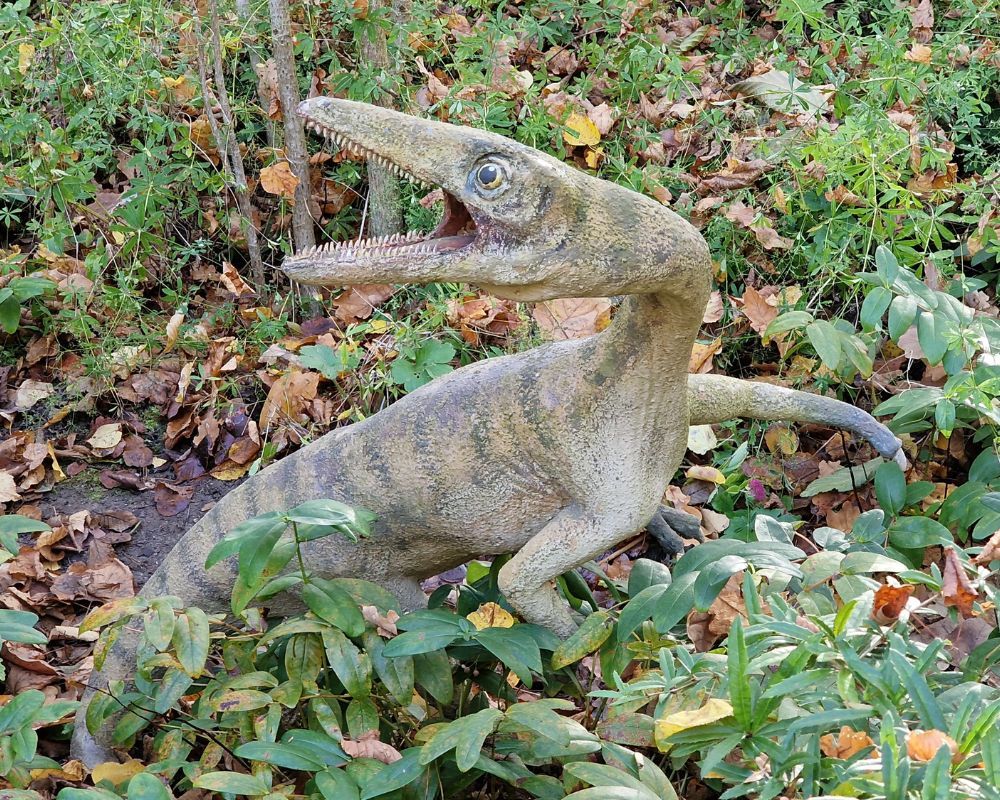
It could grow to be no more than 2 meters in length. Despite this, it was a fearsome predator, and many Compsognathus specimens have been found with other remains contained within their rib cage.
Diplodocus
There are many dinosaurs that we know next to nothing about. This is typically due to the scarcity of fossils and complete specimens. Conversely, there are also dinosaurs that we know almost everything about, as in the case of Diplodocus. Interestingly, Diplodocus specimens were very common in the Morrison Formation in the USA.
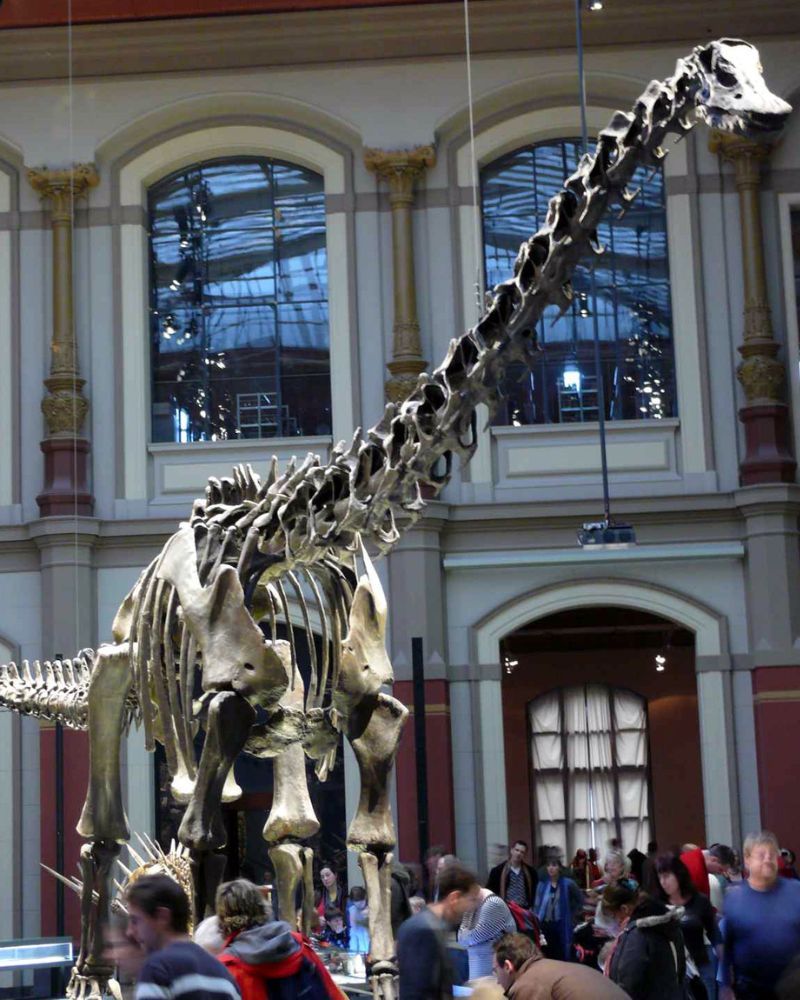
These huge creatures could grow to be 27 meters in length, making them one of the largest specimens on this list. They are also thought to have stood on their hind legs like bipedal creatures, using their tails as a prop to reach other bits of vegetation that they may not have been able to before.
Huayangosaurus
Dinosaur specimens can be found all over the world. While many of these fossils are common throughout the USA and Europe, others can only be found abroad, such as the Huayangosaurus, which was found in what is now modern-day China.
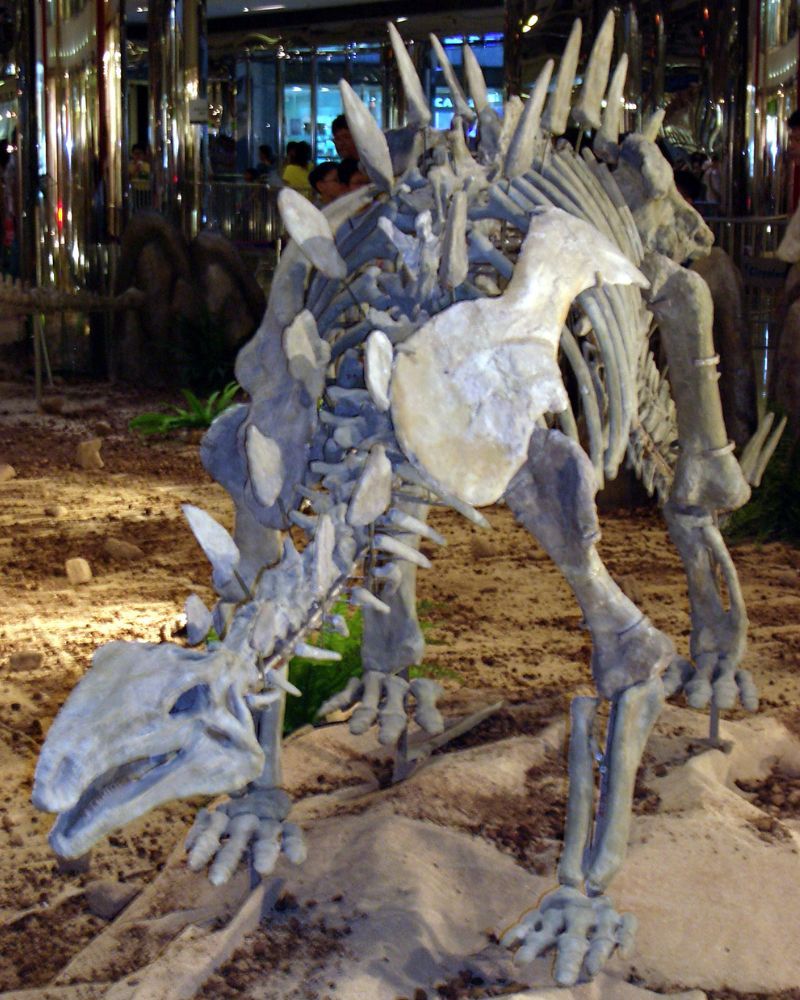
This dinosaur is one of the earliest known stegosauruses, which are distinguished by their bird-hipped frames, herbivorous nature, and quadrupedal (walking on four legs) nature. This particular genus had two rows of sharp spikes on its back and a spiked tail, making for a rather scary silhouette.
Megalosaurus
Despite dinosaurs being such a storied species, the science and studies surrounding them are fairly modern by historical standards. Much of our understanding of these creatures dates from the 1800s and onwards, which, considering that they are millions of years old, is a very short period of time.
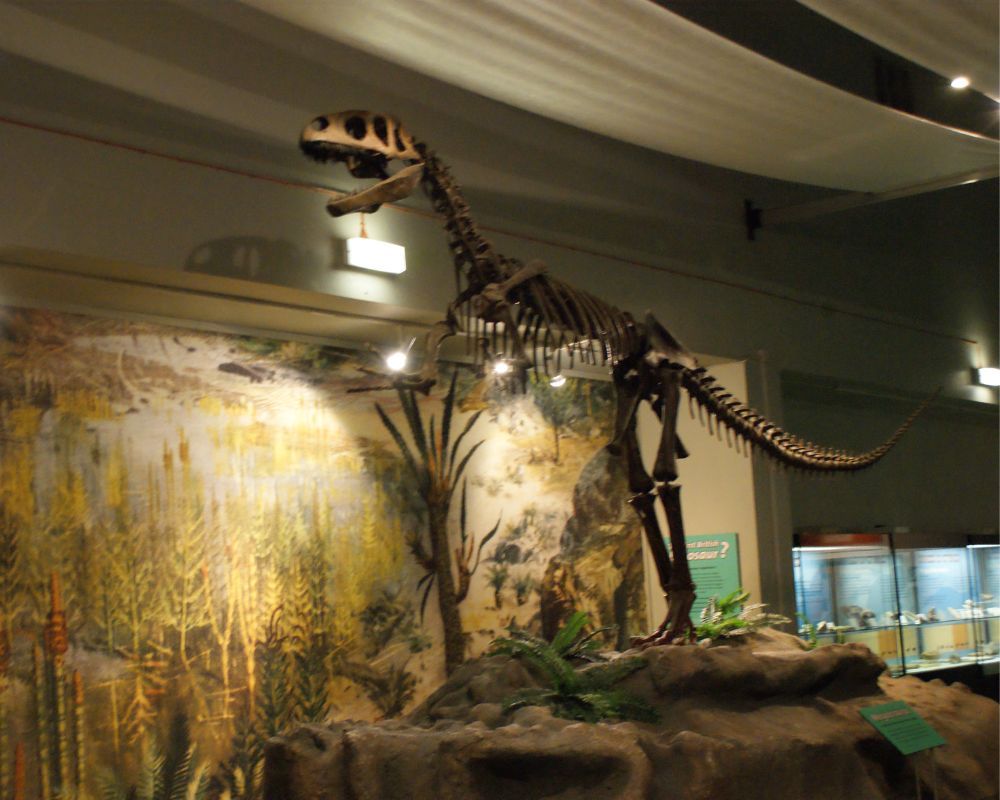
Megalosaurus was one of the very first dinosaurs to be named during the earliest studies of these creatures. It was a huge theropod that feasted on sauropods and stegosaurians and could grow up to 9 meters in length.
Stegosaurus
Hopefully, by now, it should be clear that the variety of dinosaurs is huge. You’ve probably come across many names on this list that you may not have immediately recognized. However, we feel pretty confident that most people reading this list will have heard of Stegosaurus.
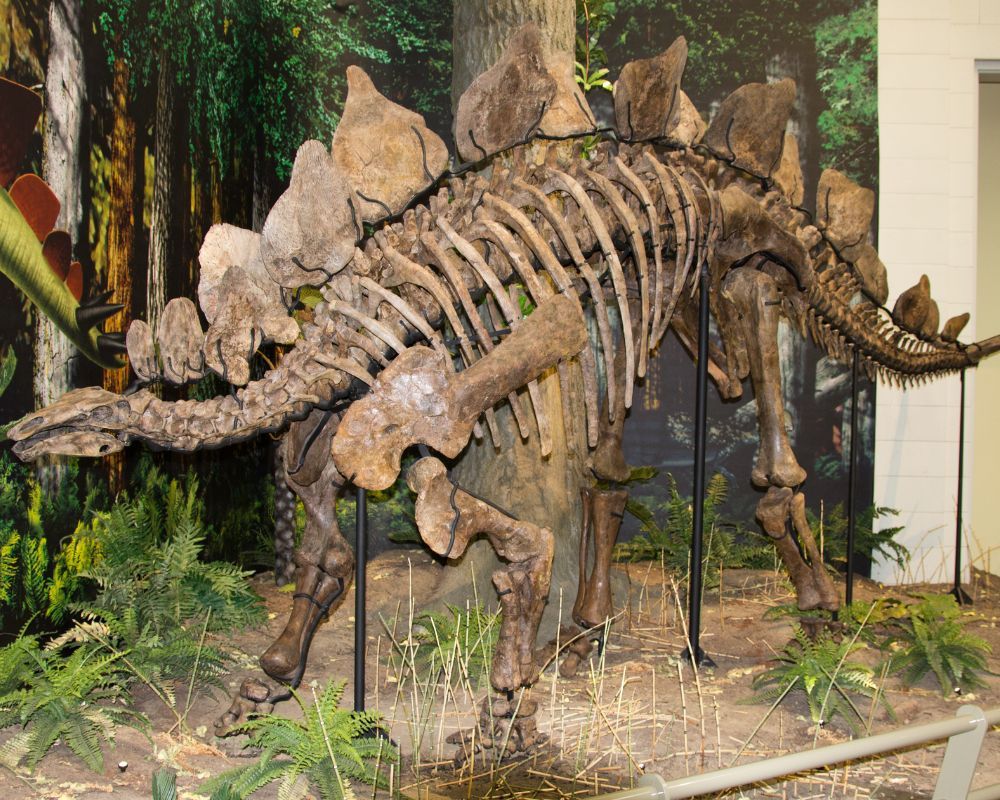
One of the most famous dinosaurs of the Jurassic Period is the stegosaurus. It could grow to be 9 meters in length and is most easily distinguished by the two rows of plates on its back. These plates are thought to have been a deterrent against predators or a means of regulating the creature’s body heat.
Vulcanodon
In terms of size, the general trend among dinosaurs seems to be that sauropods are bigger than other types. Of course, not all sauropods are built the same, and some have been found to have been no larger than the ferocious theropods that feast on them.
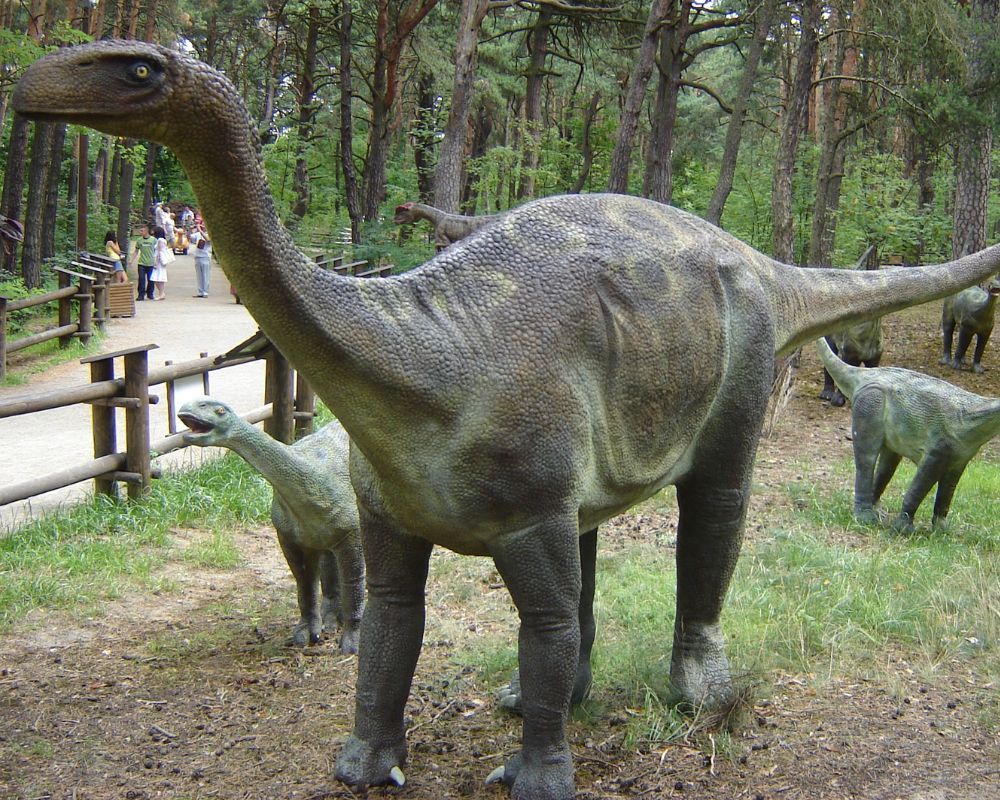
Vulcanodons could only grow up to 5 meters in length, which is quite small by sauropod standards. Its name means “Vulcan tooth,” and it was so named because it was found in volcanic rock with nine sharp teeth. However, it was later discovered that the teeth actually belonged to another creature.
Cretaceous Era
The last period during which the dinosaurs ruled the earth is known as the Cretaceous Period. During this time, the land separated further, developing into early versions of the continents we know today, albeit in different positions. This also meant that both flora and fauna were more diverse than ever.
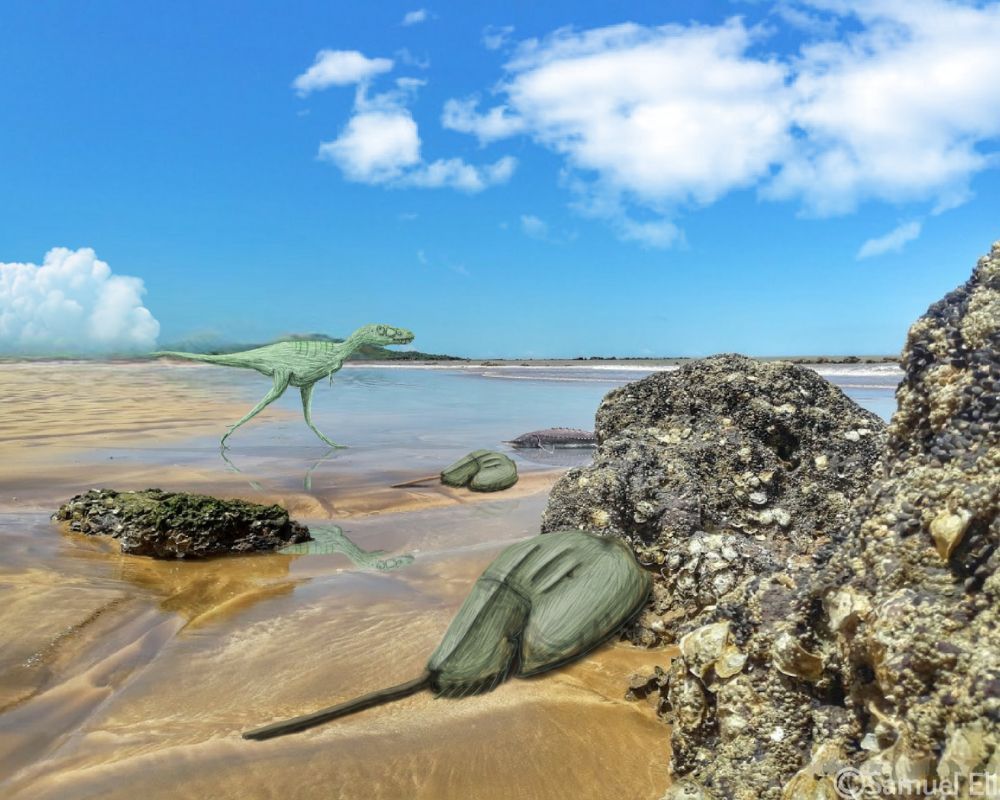
Flowering plants were also much more common during this period, which also saw the first snakes and bees evolve! Other land mammals developed, too, including tree-climbers, ground-dwellers, and even some who hunted smaller dinosaurs.
Albertosaurus
Despite its quaint name, Albertosaurus was far from gentle. A member of the Tyrannosauridae family — like the iconic T. rex — it was a large theropod closely resembling the famous predators depicted in popular media. Its name is derived from the place in which its first specimens were found, Alberta, Canada.
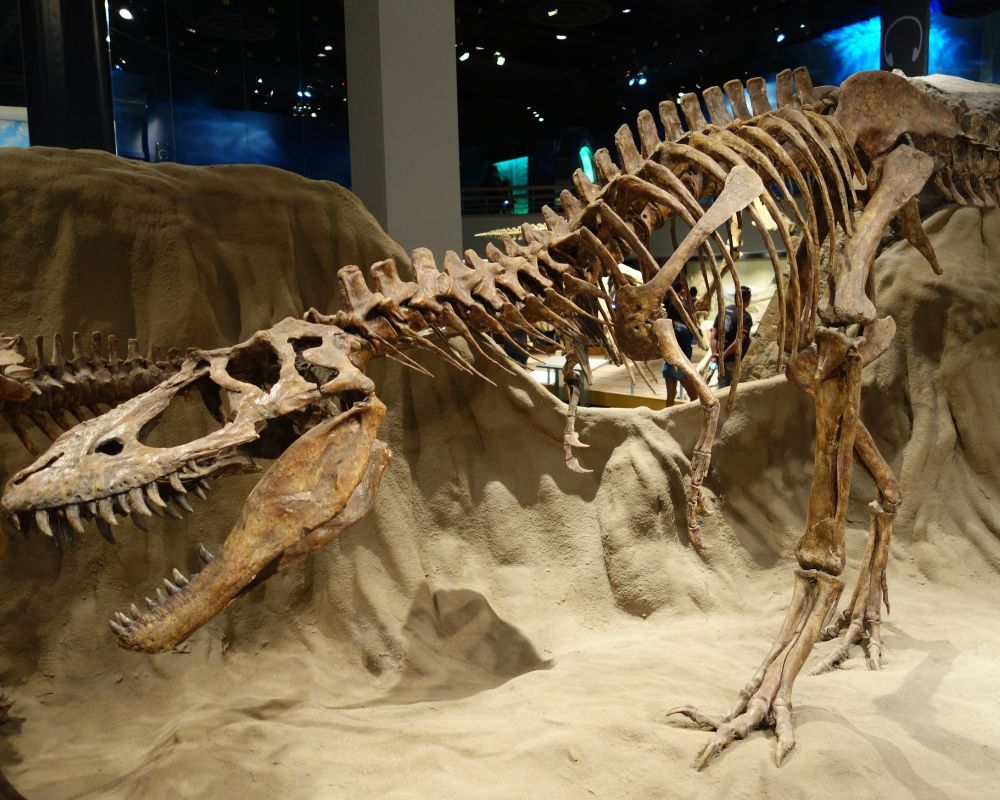
It was first discovered on an expedition by Canadian geologist Joseph Burr Tyrell way back in 1884 — since then, several other specimens belonging to the same family have been found.
Ankylosaurus
When we think of dinosaurs, we tend to think of the large, predatory kind first. These theropods were fearsome in nature and terrifying to behold, a far cry from the more peaceful-looking herbivores like sauropods. Of course, not all herbivores made for easy meals.

Enter Ankylosaurus, a great tank of a beast presumed to be capable of fighting off large predators. It is distinguished by the armored plates along its hide, as well as its flail-like tail with a heavy club on its end.
Carnotaurus
Do you know what’s more terrifying than a huge, monstrous carnivore? A huge, monstrous carnivore that can run fast. And do you know what’s more terrifying than that? A huge, monstrous carnivore that can run fast and has horns! The Carnotaurus was a fearsome meat-eater similar to T. Rex in its appearance.
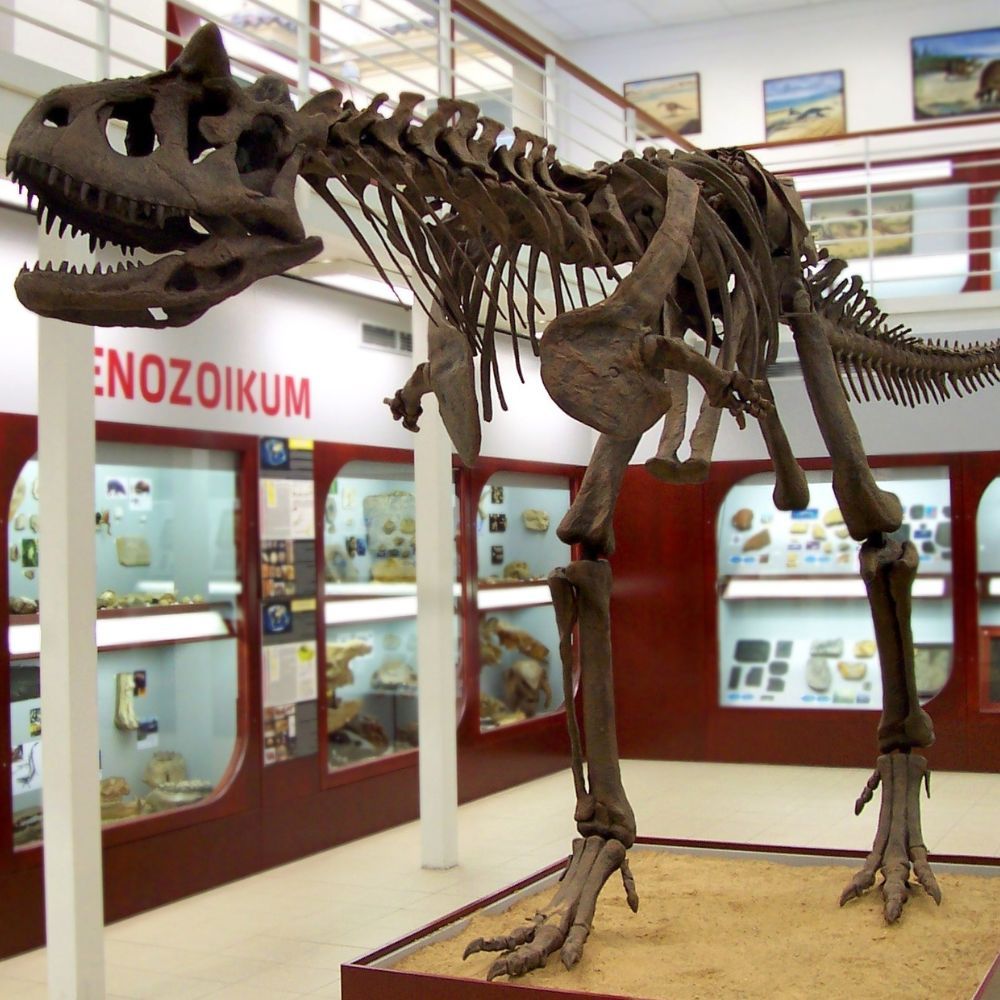
It had large hind legs and itty-bitty forearms; scientists believe these may have, in fact, been vestigial. They’re also the only known carnivorous dinosaurs with horns!
Gallimimus
With many dinosaurs, it’s easy to draw a direct line between ancient species and modern-day birds. In fact, there’s a whole group of dinosaurs known as Ornithomimosauria, otherwise called “ostrich dinosaurs”. Three guesses as to why that is.
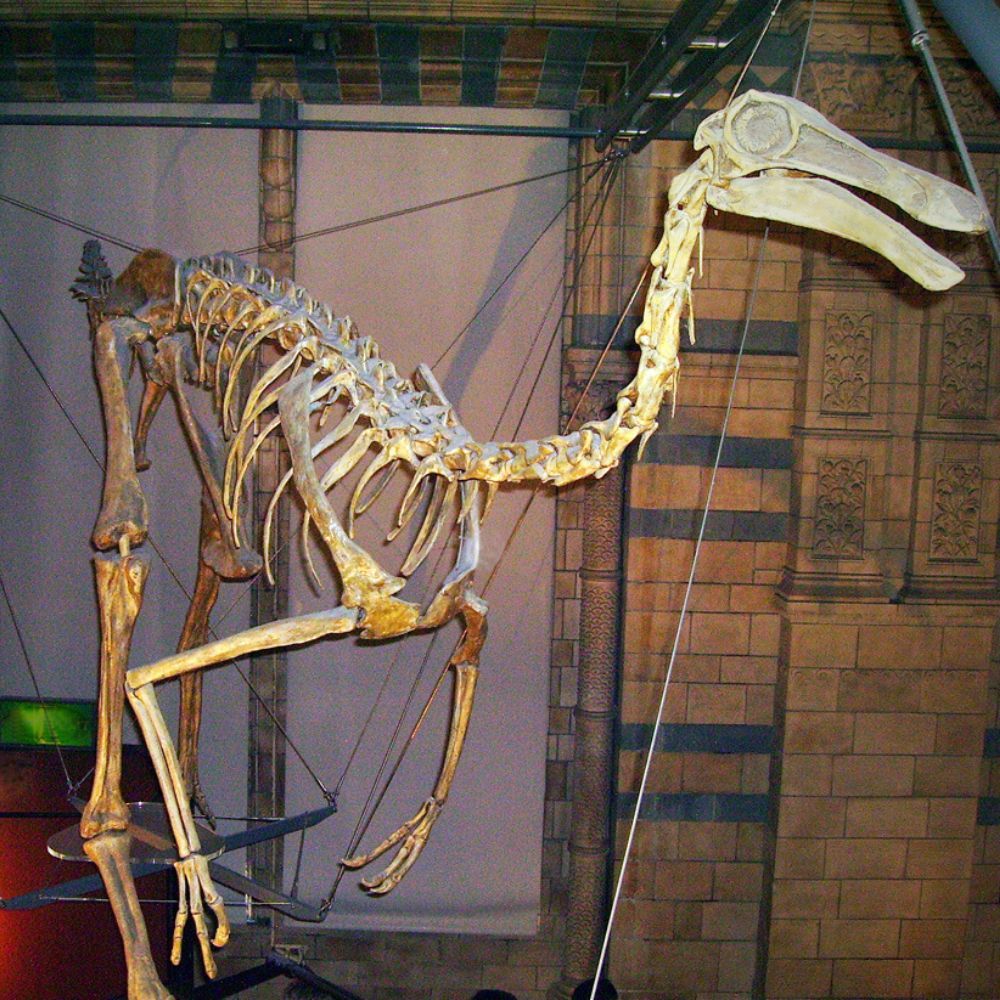
Gallimimus is the largest known “ostrich dinosaur.” It featured a long neck and even longer legs, as well as a toothless beak. Like ostriches, these dinosaurs were blindingly fast and may have even been the world’s fastest dinosaur.
Gorgosaurus
While it should be clear by now that some differences between dinosaurs are as night and day, most of them share one thing in common: they have cool names. Gorgosaurus ranks right up there with Gojirasaurus and Vulcandon. Surprisingly though, for a while, it was thought to be the very same creature as Albertosaurus, whose name is decidedly less metal.
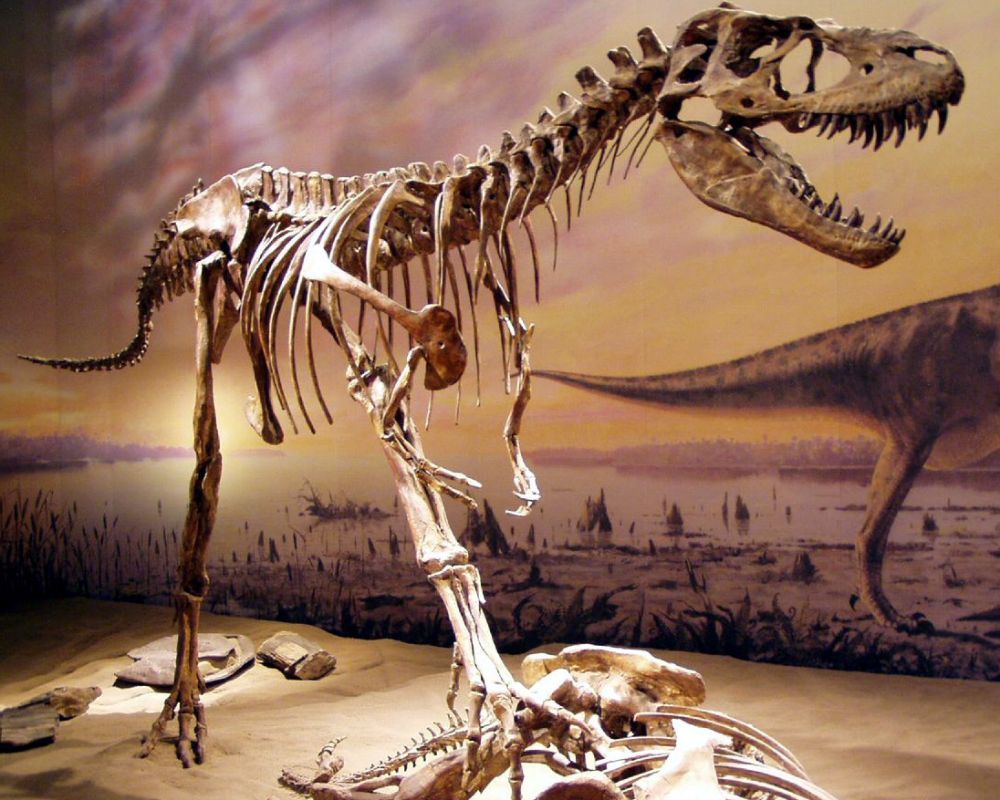
Nevertheless, Gorgosaurus was a different creature. It was part of the tyrannosauridae family, but typically wasn’t as big as some of its cousins. Of course, it was still just as fearsome as any of those other beasts.
Iguanodon
From one of the coolest named dinosaurs to one of the least inspired, we have the Iguanodon. Perhaps we should give it some slack for being the second-ever named dinosaur; unfortunately, its name remains as silly now as it was then. Nevertheless, the Iguanodon was a huge dinosaur that shared little physical resemblance to the modern-day iguana.
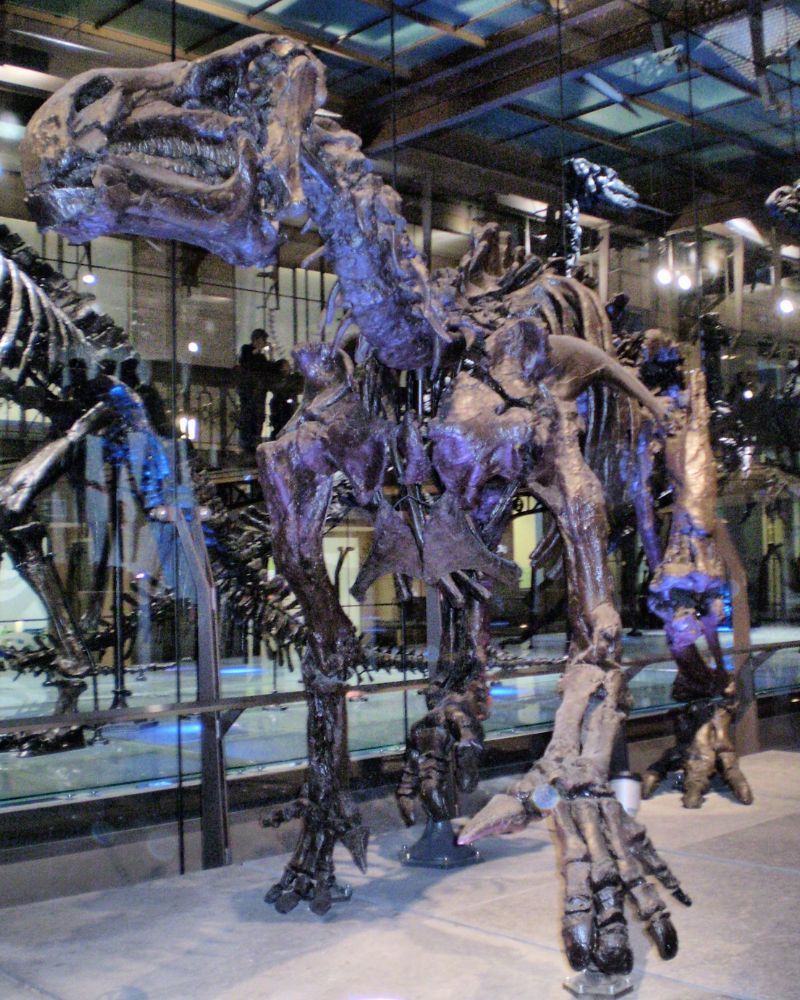
It was a herbivore with forefeet that almost resembled hands — these featured a thumb spike, three hoof-like fingers, and a long fifth finger that could not only be flexed but also gripped.
Microraptor
Dinosaurs come in a variety of shapes and sizes. We’ve had some big dinosaurs on this list as well as a few smaller ones, but none were as tiny as the aptly-named Microraptor. These small creatures inhabited — in abundance — what is known today as Asia.
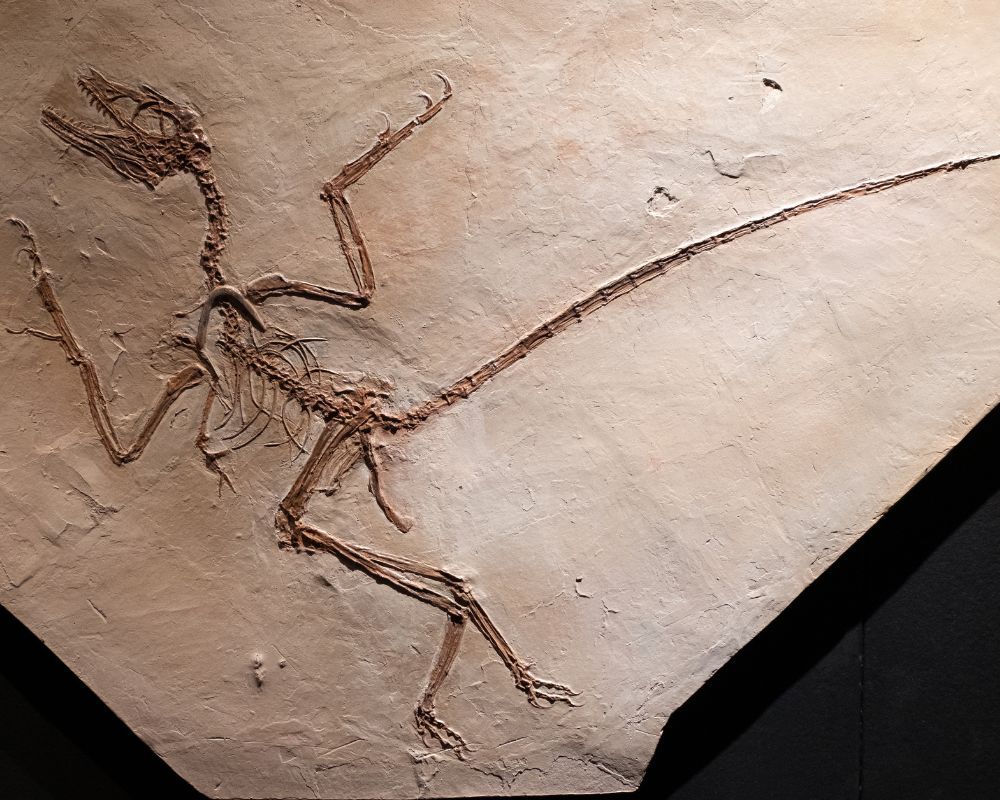
Interestingly, Microraptors were gifted with two sets of wings rather than just one. This enabled them to glide to the airwaves, and recent studies suggest that they may have even been capable of bird-like flapping.
Oviraptor
With a basic understanding of language as well as the skill to interpret (or perhaps intuit), you can tell a lot about a dinosaur by its name alone. The Oviraptor, for example, was so named because it was discovered near a bunch of eggs; being a predator, it was thought that the creature was in the process of stealing and eating the eggs, hence its name, which means “egg thief”.
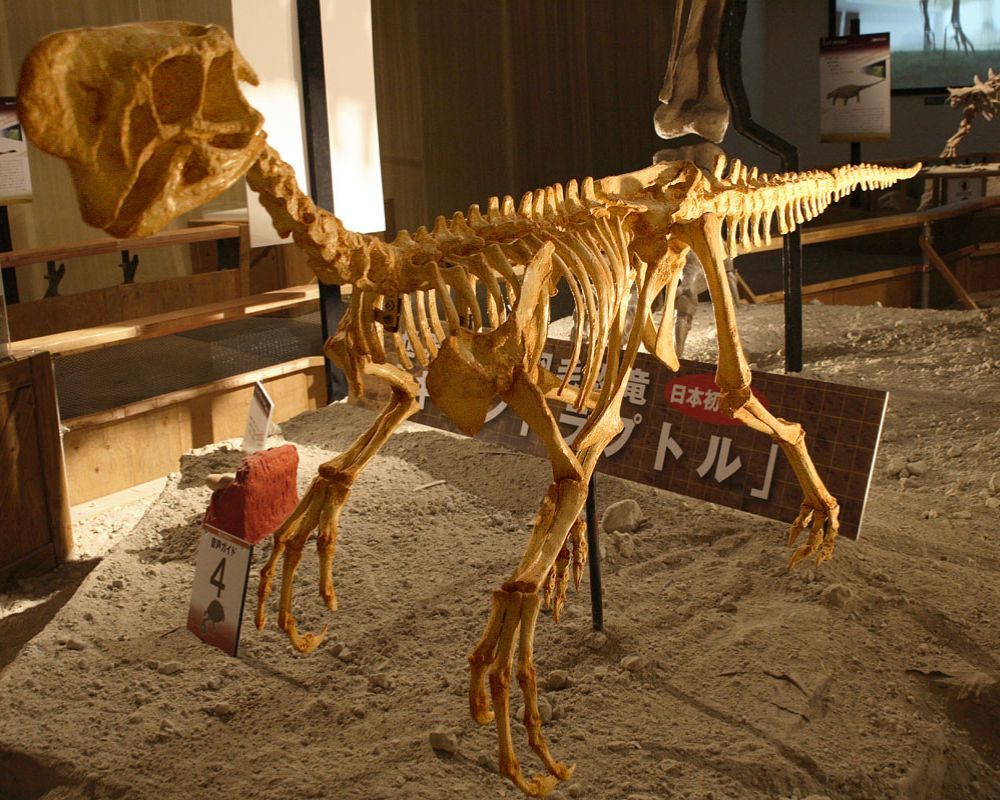
Sometimes, though, these names are misleading. While Oviraptor belonged to the broad theropod category (i.e., predators and meat-eaters), it was later discovered that the eggs actually belonged to the same family. It wasn’t stealing them — it was protecting them!
Spinosaurus
Care to guess how Spinosaurus got its name? True to form, it’s named for the striking rows of large spines on its back, thought to either regulate body heat or display its fearsome presence.
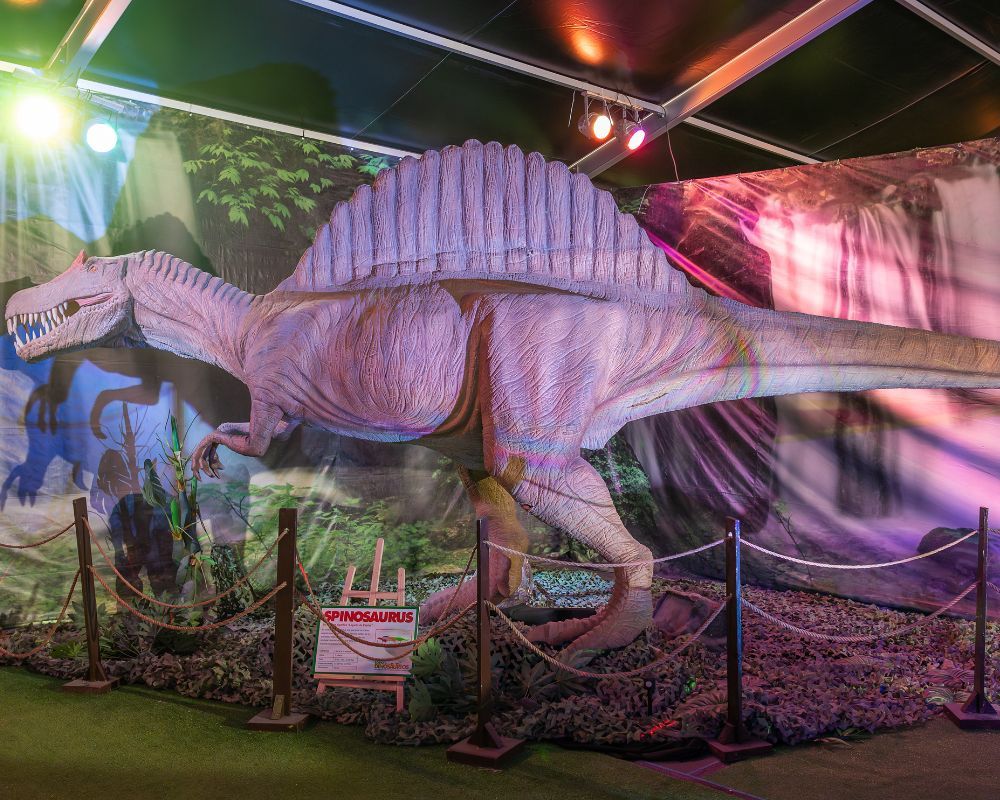
And fearsome it was! Spinosaurus could grow up to 17 meters in length, making it one of the largest land predators. Its long snout enabled it to catch aquatic prey easily — you can bet that it never went hungry!
Tyrannosaurus Rex
You knew this one was coming. How could we curate a list of dinosaurs without mentioning the king of dinosaurs himself? Indeed, Tyrannosaurus Rex was one of the largest land-based predators in the world, rivaled only by Spinosaurus, and is also one of the few dinosaurs that just about anyone would be able to recognize.
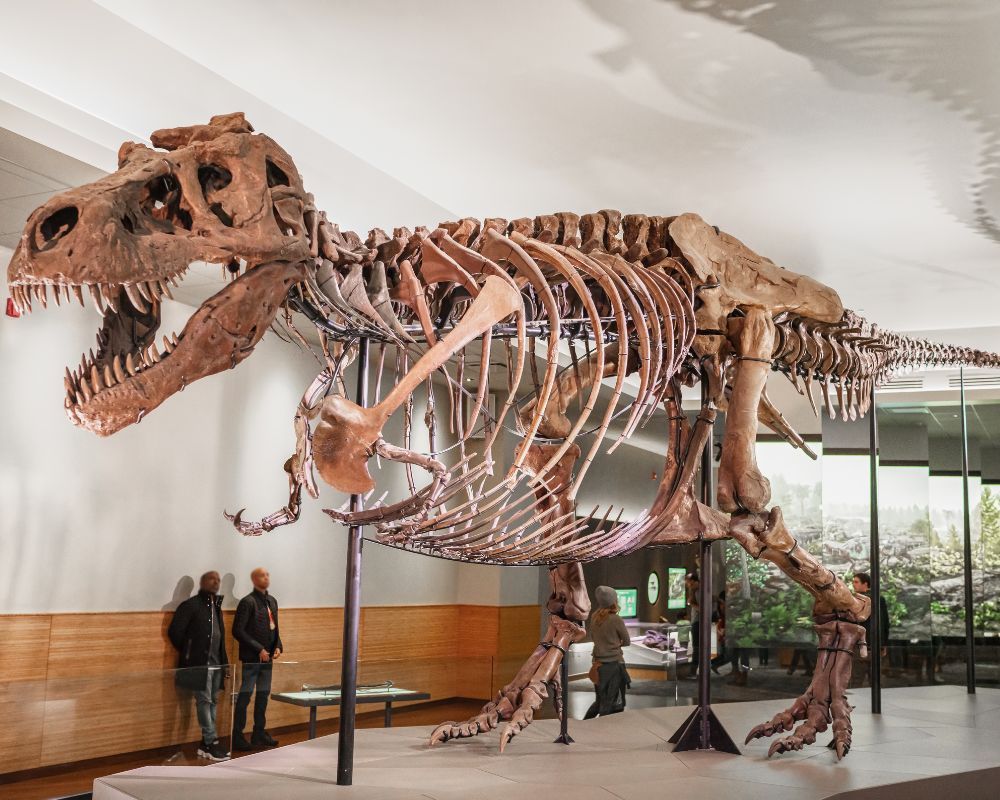
Tyrannosaurus Rex had a huge head, small forearms, and long, sharp teeth. These teeth could grow up to 30 centimeters in length — that’s about the size of your forearm! On top of that, its jaws were powerful, and Tyrannosaurus Rex is thought to have had the strongest bite in history.
The End of the Dinosaurs
Dinosaurs ruled the Earth for 250 million years, but even their reign had to end. Their extinction is often attributed to a massive asteroid impact 66 million years ago, triggering a catastrophic explosion that reshaped the planet. However, while this is the most widely accepted theory, it’s not the only explanation. Environmental factors like rapid climate change may have also played a role, with the sudden shifts proving too extreme for dinosaurs to adapt and survive in time.
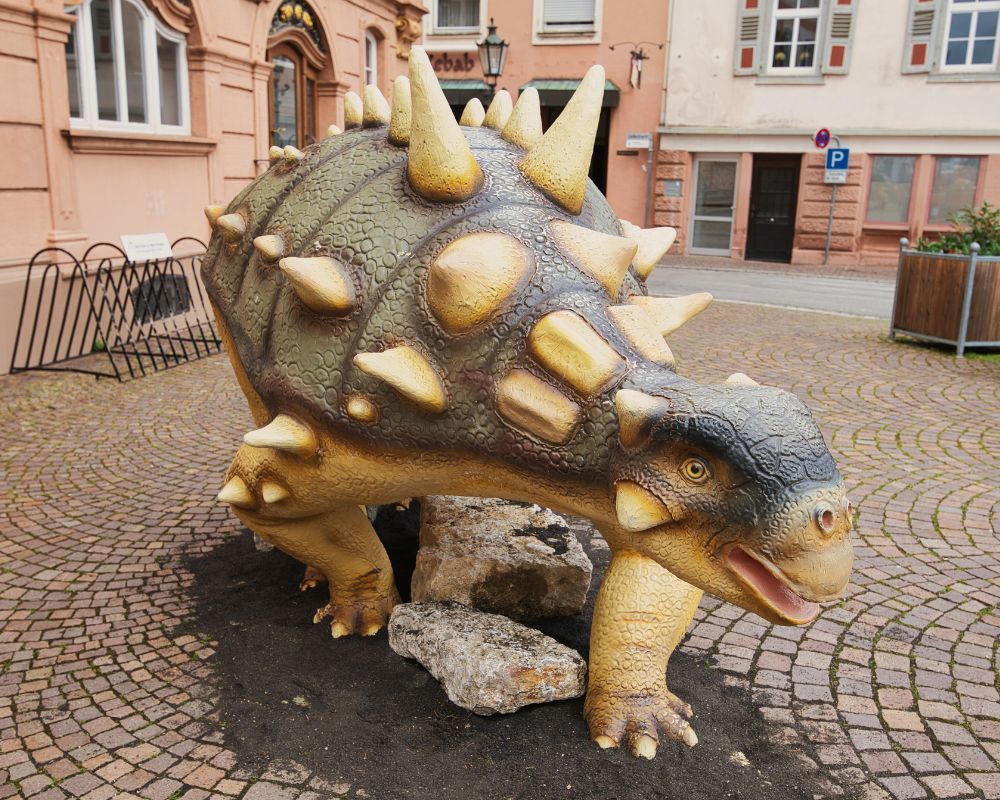
In the aftermath of this catastrophe, other creatures — particularly mammals — began to evolve rapidly alongside the only surviving dinosaurs: birds. Once fearsome rulers of the Earth, these ancient giants have transformed into the harmless avians we see today. However, if Alfred Hitchcock’s The Birds is any indication, a trace of their ancient killer instinct may still linger.
Leave a Reply